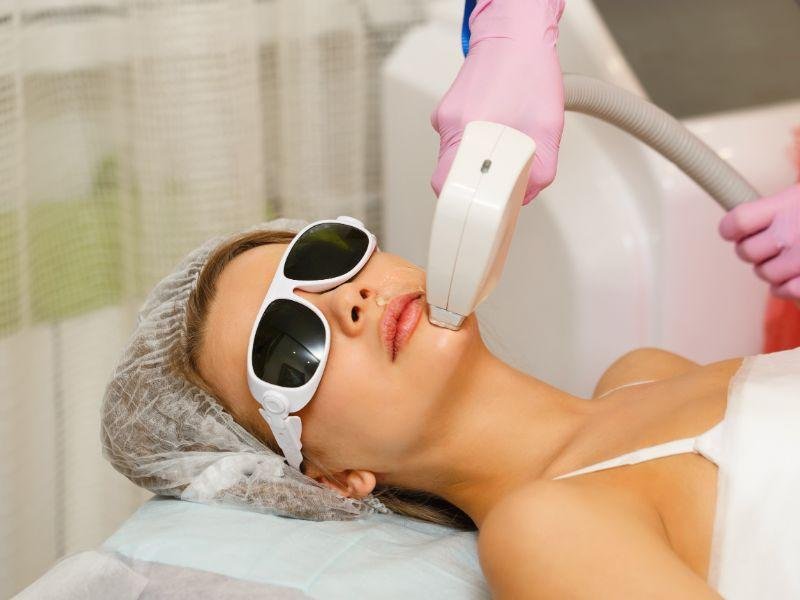What is PCOS Hair & Will Laser Hair Removal Help?

If you are struggling with unwanted facial or body hair that keeps coming back despite your efforts, you might be dealing with PCOS (polycystic ovary syndrome) hair. You might have heard about these terms as they are very common these days, and people are discussing them more than ever. This is not a good sign for women's health as they have to deal with a lot of stuff. Many women with PCOS experience excess hair growth, known as hirsutism.
This article explores whether laser hair removal can offer a solution for managing PCOS-related hair growth. You will get to know how PCOS hair work and Waxing hair removal services or Laser hair removal services help you to get rid of this.
Understanding PCOS Hair
PCOS is a common hormone disorder affecting approximately 8-13% of women of childbearing age. One of its frustrating symptoms is hirsutism, where women develop dark, coarse hair in a male-pattern distribution—often on the face, chest, back, and abdomen. This hair growth is influenced by higher levels of male hormones (androgens) in the body.
Despite regular shaving, waxing, threading, or plucking, PCOS-related facial and body hair tends to grow back quickly, sometimes within days. This ongoing cycle can be emotionally distressing and may lead to skin irritation. While hormonal birth control and anti-androgen medications can help manage symptoms, they often come with side effects.
Why Laser Hair Removal Works
Laser hair removal uses concentrated light pulses to target the hair follicle. The pigment in the hair follicle absorbs the laser's energy, damaging it and inhibiting hair growth. Due to the cyclical nature of hair growth, multiple sessions spaced every 6 to 8 weeks are usually needed for optimal results.
While medications primarily address the hormones that stimulate hair growth, laser treatment directly addresses the root cause—the hair follicle itself. This distinction is crucial because it means laser hair removal can provide long-term relief from unwanted hair growth, even in the presence of hormonal imbalances.
Effective for PCOS Hair Removal
Laser hair removal is widely regarded as one of the most effective long-term treatments for PCOS-related hirsutism. Over a series of treatments, the laser not only targets coarse hairs visible on the skin's surface but also finer, less noticeable peach fuzz. By treating hairs before they fully mature, laser sessions help maintain smooth skin over time. It's important to avoid plucking or waxing between sessions to ensure that the hair follicle remains intact for effective laser targeting.
While a few stray hairs may eventually regrow, many women with PCOS experience significant and permanent hair reduction in treated areas after an average of 6 to 8 laser sessions. With reduced hair growth and less stubble, laser hair removal can help you feel more comfortable and confident in your skin.
Before Care
Before undergoing laser hair removal for PCOS-related hirsutism, it's important to prepare properly. You will get the details about pre-care for successful hair removal and making your skin beautiful. Let’s discuss in detail:
1. Consult with a Professional
Schedule a consultation with a qualified technician or dermatologist who specializes in treating PCOS-related hair growth. They will evaluate your skin type, hair color, and medical history to create a personalized treatment plan that suits your needs. Waxing hair removal Toronto professionals customize treatments and listen to your needs carefully.
It's better to connect with them and make your life easy. You just have to explain yourself, and they will handle the rest carefully.
2. Understand Treatment Expectations
During your consultation, discuss what to expect before, during, and after each laser hair removal session. This includes potential side effects such as temporary redness or mild discomfort, which are common and typically subside shortly after treatment. Your professional expert will explain you and
3. Follow Pre-Treatment Guidelines
Avoid sun exposure and tanning beds in the weeks before your first laser session. Tanned skin is more sensitive to laser energy, increasing the risk of adverse effects. Following this guideline helps ensure a safer and more effective treatment.
4. Commit to Your Treatment Plan
Laser hair removal often requires multiple sessions to achieve optimal results. Your technician will recommend a schedule based on your hair growth cycle and treatment area. Consistency with your treatment plan is key to reducing hair growth effectively over time.
Final Wording
By following these steps, you can maximize the benefits of laser hair removal for managing PCOS-related hirsutism. Consulting with a knowledgeable professional ensures that you receive personalized care and achieve smoother, hair-free skin with minimal discomfort.
- Art
- Causes
- Crafts
- Dance
- Drinks
- Film
- Fitness
- Food
- Spellen
- Gardening
- Health
- Home
- Literature
- Music
- Networking
- Other
- Party
- Religion
- Shopping
- Sports
- Theater
- Wellness
- Politics
- IT
- Relationship
- Blockchain
- NFT
- Crypto
- Fintech
- Automobile
- Faith
- Family
- Animals
- Travel
- Pets
- Coding
- Comedy
- Movie
- Game
- Computer


